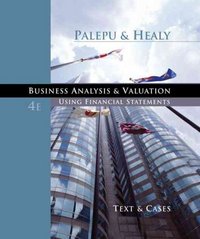drop down options
1. more, less
2.gross profit, net income, EBIT
3.ineffective, effective
4. interest and tax expenses, cost of goods sold
5.levels of leverage, manufacturing proccess, marketing method
6. unfavorably, favorably
7. improving, worsening, constant
8. consistent, inconsistant
9. sales, total assests
10. decreasing, increasing, variable first decreasing then increasing slightly, variable first increasing then decreasing substantly
11. increase in other expenses account, decrease in the other expenses account, increases in the selling general and administrative expense account, decrease in the selling general ans administrative expense accounts
12. a constant rate of 35%, a rate that varies between 20% and 35%
Sales Less: Cost of goods sold Gross profit Less: Selling, general, and administrative expenses Less: Other expenses Earnings before interest and taxes (EBIT) Less: Interest expense Earnings before taxes (EBT) Less: Taxes Net income Less: Common dividends paid Dividends per share Balance Sheet Data Assets: Cash and marketable securities Receivables Inventory Other current assets Total current assets $65,786,000,000 $63,435,000,000 $62,884,000,000 45,725,000,000 44,062,000,000 44,157,000,000 20,061,000,000 19,373,000,000 18,727,000,000 13,469,000,000 13,078,000,000 12,954,000,000 860,000,000 1,521,000,000 1,609,000,000 5,252,000,000 4,673,000,000 4,402,000,000 757,000,000 801,000,000 866,000,000 4,495,000,000 3,872,000,000 3,536,000,000 1,575,000,000 1,384,000,000 1,322,000,000 $2,920,000,000 $2,488,000,000 $2,214,000,000 609,000,000 496,000,000 465,000,000 $0.87 $0.67 $0.62 2010 2009 2008 $1,712,000,000 6,153,000,000 7,596,000,000 1,752,000,000 17,213,000,000 25,493,000,000 999,000,000 $43,705,000,000 $2,200,000,000 $864,000,000 6,966,000,000 8,084,000,000 7,179,000,000 6,705,000,000 2,079,000,000 1,835,000,000 18,424,000,000 17,488,000,000 25,280,000,000 25,756,000,000 829,000,000 862,000,000 $44,533,000,000 $44,106,000,000 Net fixed assets Other long-term assets Total assets Liabilities and Equity: Accounts payable Accruals Other current liabilities $6,625,000,000 3,326,000,000 119,000,000 10,070,000,000 18,148,000,000 $6,511,000,000 3,120,000,000 1,696,000,000 11,327,000,000 17,859,000,000 $6,337,000,000 2,913,000,000 1,262,000,000 10,512,000,000 19,882,000,000 Total current liabilities Long-term liabilities management in using the company's current and fixed assets to generate pronts (Note: Kound all intermediate and Tina Calculations to two decimar places. The values you enter should be in percentage form.) Target Corporation Profitability Ratios Gross profit margin % 2010 2009 % 2008 % Operating profit margin 2010 % % 2009 % 2008 Net profit margin % 2010 96 2009 % 2008 ROA 9 2010 2009 % % 2008 ROE 2010 90 2009 96 2008 BEP Yo 2010 % 2009 2008 1. The return on assets (ROA) ratio relates the volume of after-tax earnings generated to each dollar of company assets. The trend of Target's ROA ratio, over the period of 2008 to 2010, indicates that management is becoming productive or effective in generating dollars. In addition, the return on equity (ROE) ratio provides shareholders with a summary value that indicates the amount of net income generated by each dollar of stockholders' equity. The trend of Target's ROE ratios indicates that management is in generating a growing return to Target's shareholders Which of the following statements are correct? Check all that apply. The trend of the Net income account suggests that Target is doing a better job in managing its operating and debt-financing costs. The trend of Target's Net income account is consistent with the observed behavior of the ROA and ROE ratios. An examination of the trend of the total asset account balances further supports the behavior of the ROA values. 2. In contrast, the basic earnings power (BEP) ratio provides insights into the effectiveness of Target's management in generating profits using the firm's total assets-before consideration of its By excluding these expenses from the calculation, the ratio is useful for comparing companies that employ differing tax treatments and Which of the following statements are correct? Check all that apply. During 2008 to 2010, the quality of management performance suggested by the ROA and ROE ratios is consistent with that suggested by Target's BEP ratio. The behavior of the Accounts receivable and other long-term asset accounts contributed to the trend of Target's BEP ratio during 2008 to 2010 The behavior of Target's Accounts payable and retained earnings accounts contributed to the trend of the BEP ratio during 2008 to 2010. In general, it is reasonable to conclude that the trend of the BEP ratio reflects in na on management's performance during the 2008-to- which is The trend of the BEP ratio indicates that Target's management performance has been ROA and ROE ratios. with that of the 3. The profit margin ratios--gross, operating, and net-are useful to users of financial information interested in the company's ability to manage (but not necessarily minimize) its costs. Each ratio places a different income statement subtotal (gross profit, EBIT, and net income) in the numerator and uses as the its denominator. The pattern of gross profit margins from year to year suggests that Target's costs of goods sold as a percentage of total sales are ... This trend is verified by which of the following data? Target's cost of goods sold, expressed as a percentage of total sales, for 2008, 2009, and 2010 are 69.51%, 69.46%, and 70.22%, respectively. Target's cost of goods sold, expressed as a percentage of total sales, for 2008, 2009, and 2010 are 30.49%, 30.54%, and 29.78%, respectively Target's cost of goods sold, expressed as a percentage of total sales, for 2008, 2009, and 2010 are 70.22%, 69.46%, and 69.51%, respectively. 4. An examination of the income statement data suggests that the growth in the operating and net profit margins is mostly attributable to Is it reasonable to attribute changes in the net profit margin to changes in Target's tax rate? because Target pays










